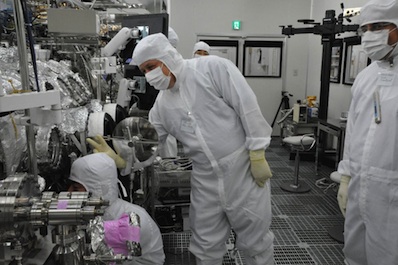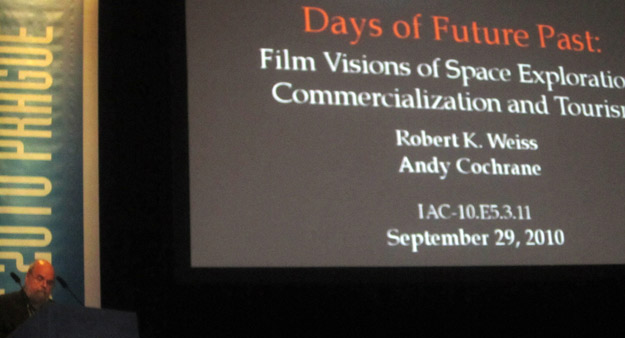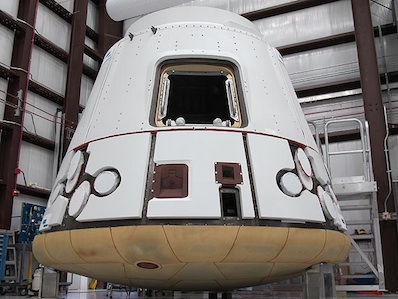E
EarthlingX
Guest
http://www.spaceref.com : Space Generation Congress 2010 Achieves Record Success
...By Farnaz Ghadaki
Posted Wednesday, September 29, 2010
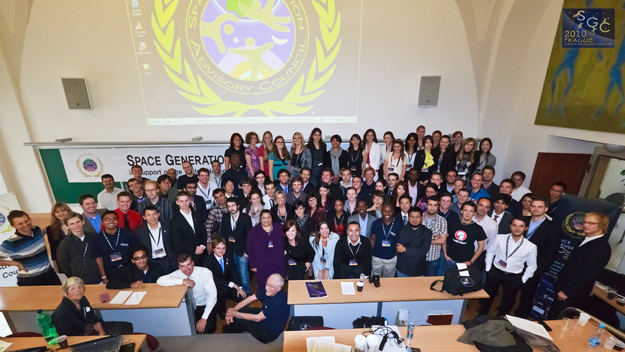
Space Generation Congress participants and organizers.
The 9th Annual Space Generation Congress (SGC) hosted by the Space Generation Advisory Counsel (SGAC) was held in Prague, Czech Republic, from September 23 - 25, 2010. Being a complimentary event preceding the the 61st International Astronautical Congress, this congress started with a record high of 200 top and carefully chosen delegates gathered together to discuss the latest issues in the space industry. With five concurrent workshops at its core, in conjunction with talks by distinguished members of the space industry, SGC 2010 was very successful in reaching its goal of creating a forum to bring together and facilitate the voice of innovative, creative, and passionate students and young professionals on space issues, particularly at the international level.
Over 220 students and young professionals from around the globe applied to participate in SGC2010. One hundred delegates were chosen from 40 countries, 28 of whom received grants and scholarships to attend the congress, and an additional 10 who received the IAF grant. Setting a record high for SGAC, this was a significant increase in numbers from 2009, which saw a participation of 75 delegates representing 32 countries, 21 of whom were granted scholarships. As with previous years, the delegates brought knowledge and experience from many fields, from engineering, law, policy, marketing, business development, journalism, to astrophysics, biology, geology, education, and many more. They were divided into five working groups where they discussed, analyzed, and made recommendations on key space topics of: Agency, Climate, Exploration, Industry, and Outreach.
...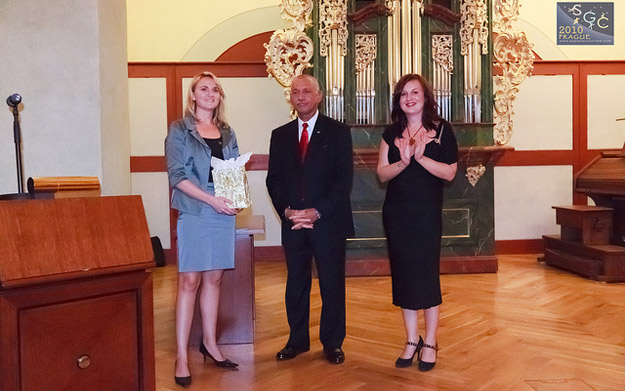
Right to Left, SGAC Chair Agnieszka Lukaszczyk, NASA Administrator Charles F. Bolden, and SGAC Executive Director Ariane Cornell.
The Space Generation Congress concluded with a special Gala Dinner event on Saturday, September 25, 2010, held at the beautiful Charles University in Prague, and was attended by SGC delegates and prominent international leaders of the space sector. Guest of honor, NASA Administrator, Charles F. Bolden, addressed the audience and stressed the importance of youth for the future of space exploration. "If exploration is your passion no one will stop you. You will make a difference, and I look forward to hearing your voices," Administrator Bolden stated. His presence amplified the enthusiasm that the students and young professionals already felt about space, making a superb and unforgettable ending to the 9th annual Space Generation Congress.



